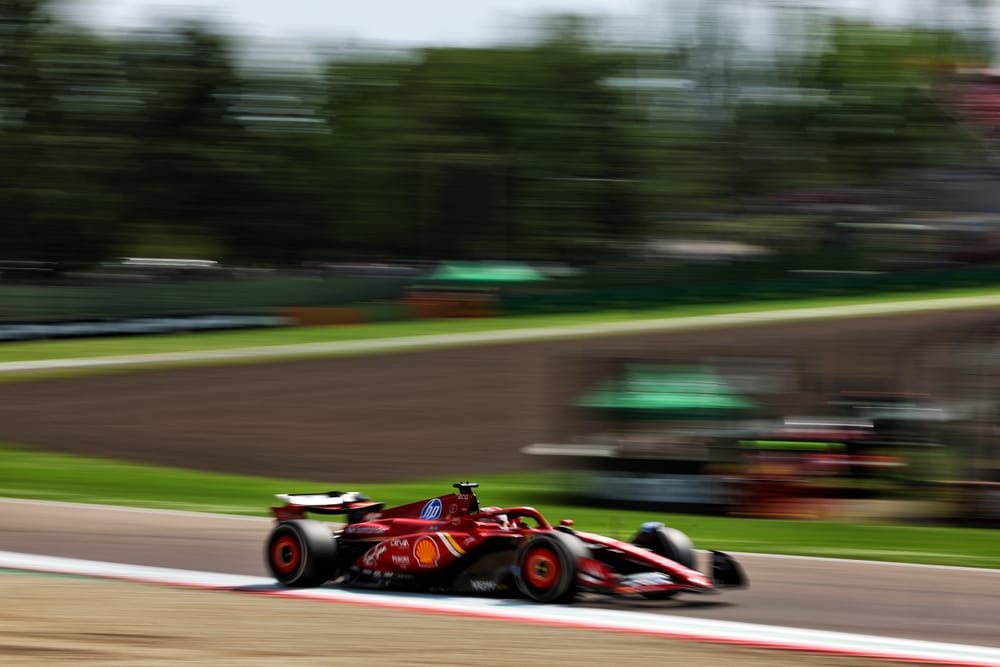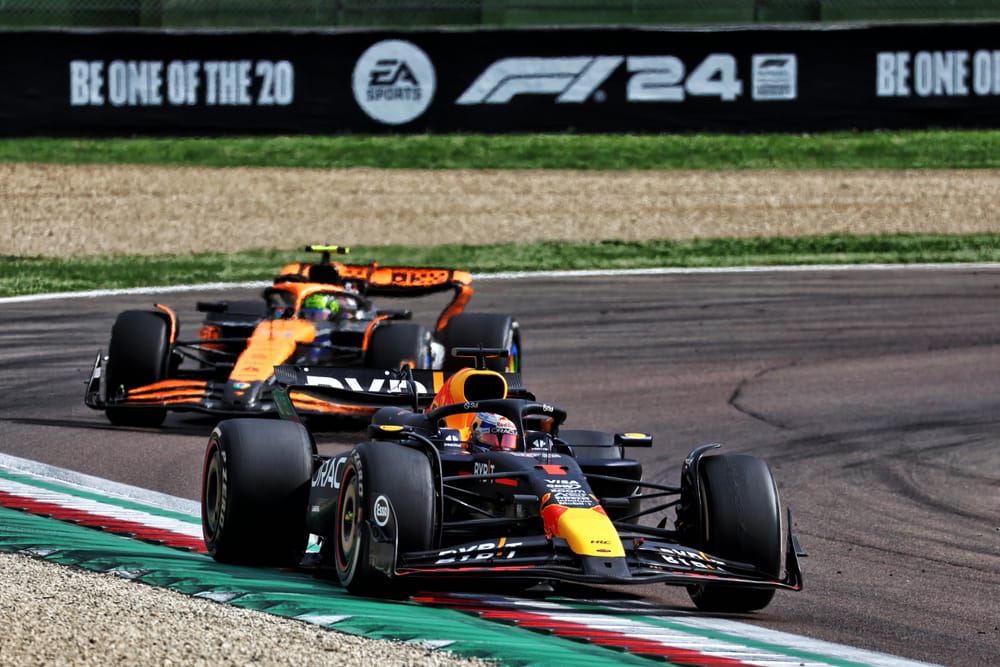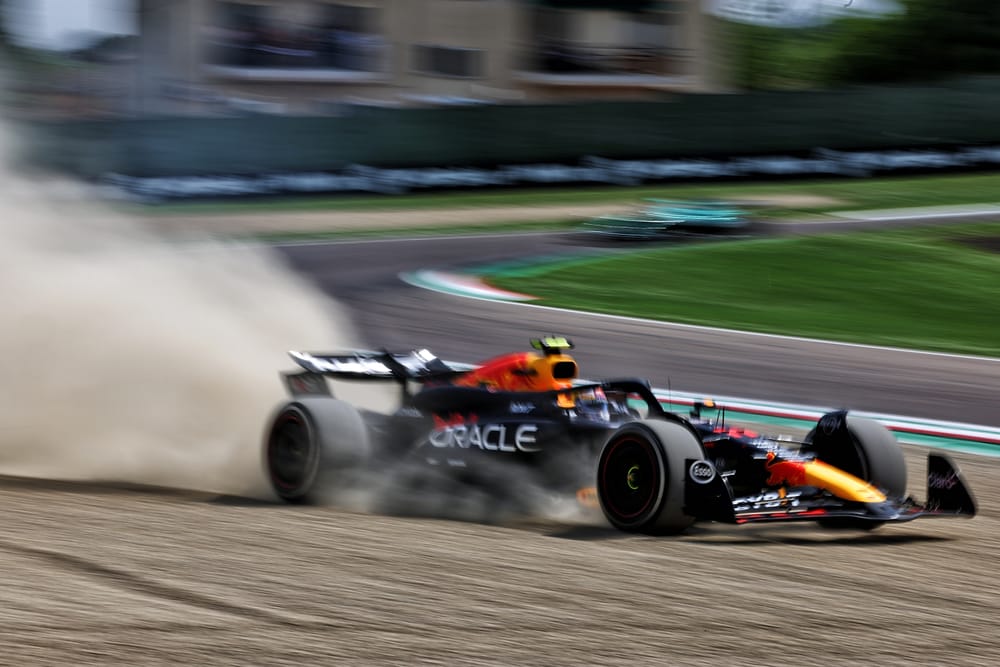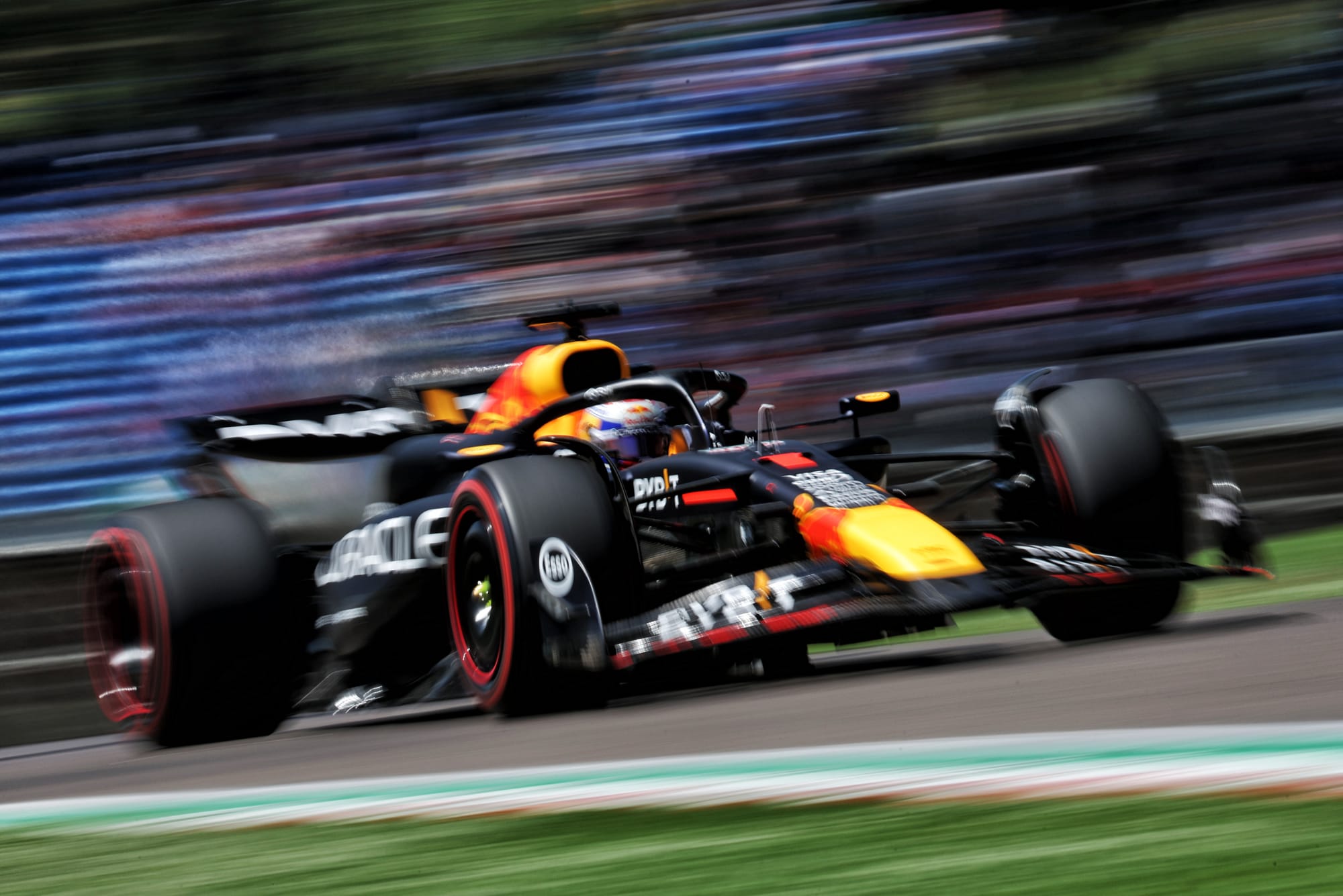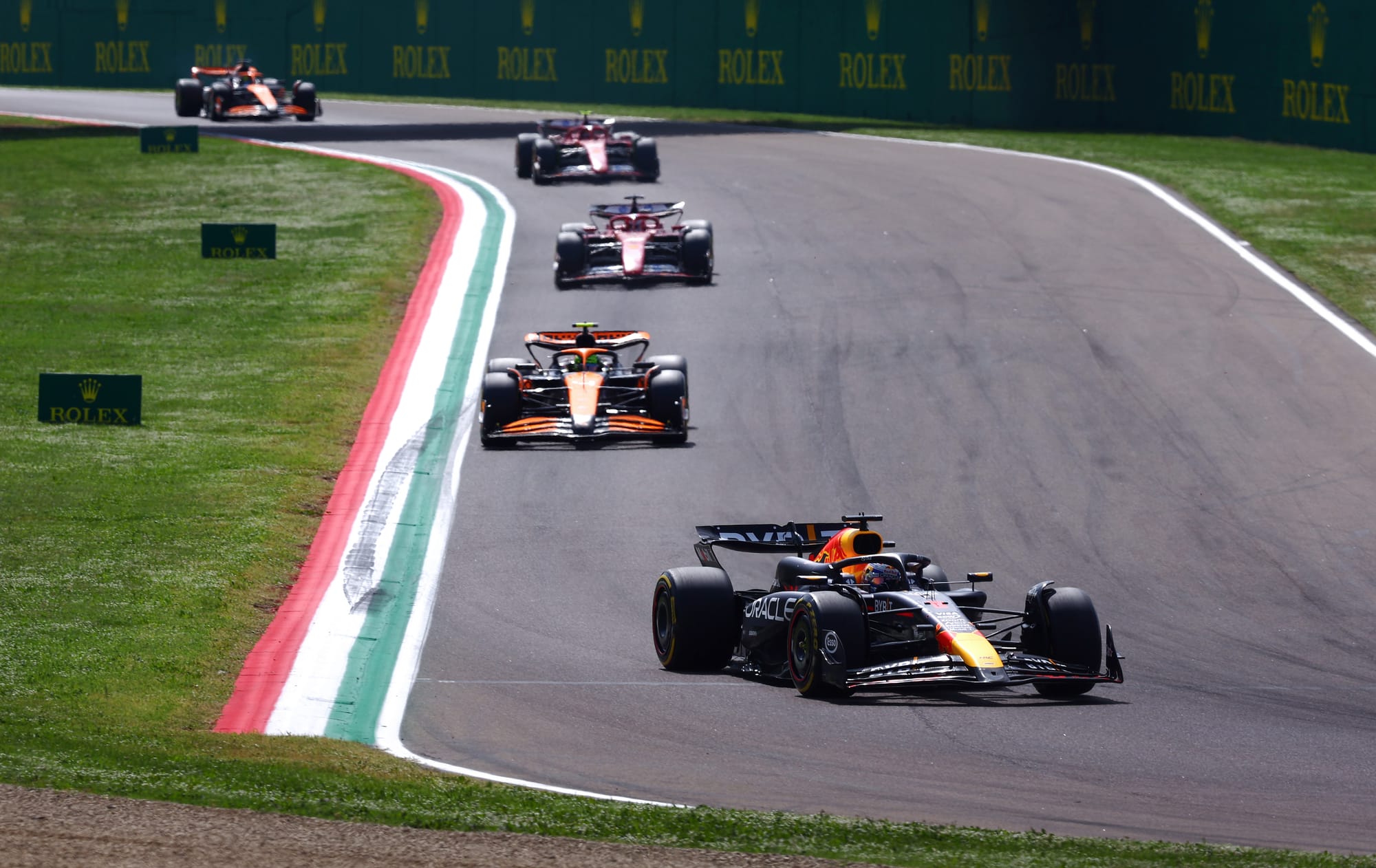Up Next

Ferrari had the air of frustration synonymous with a missed opportunity after the Emilia Romagna Grand Prix, as its upgraded Formula 1 car finished third-best behind Red Bull and McLaren.
The much-hyped first major Ferrari upgrade of 2024 was never intended to be the ‘evo’ or ‘2.0’ car that some overexcited parties dubbed it in the build-up to Imola. But as Ferrari had started the season, on balance, as Red Bull’s nearest competitor and even won a race, there was obvious optimism that it would edge it closer to its main rival.
A second successive defeat to McLaren, then, let alone failing to beat Red Bull would be seen as a clear disappointment. But it was actually what consigned Ferrari to third, rather than the result itself, that seemed to be irritating some key figures after the race.
Charles Leclerc was evidently not thrilled after a grand prix in which he pressured Lando Norris for a while but eventually finished a fairly lonely third, seven seconds or so adrift of race winner Max Verstappen and Norris who crossed the line almost underneath his rear wing. Even with this being a podium on home soil for Ferrari, in front of the Tifosi, and just down the road from its Maranello headquarters, Leclerc’s focus was elsewhere.
“I mean, it's always very special to be on the podium here in Imola,” he said.
“However, obviously, I'm never satisfied with a P3. You always want to be on the top step.
“Considering everything, I think we mostly lost what could have been yesterday in qualifying. And this we will analyse.”
This was a sentiment supported by team principal Fred Vasseur. He was not dissatisfied in principle with finishing on the podium eight seconds behind Verstappen, as this would have been a good result for Ferrari at most races this year. But like Leclerc, he felt there was more on the table.
“It's a kind of mixed feeling for me because I think that we did a step forward,” Vasseur said.
“McLaren did probably the same as us, we compensate [closed] I think partly the delta to Red Bull, and we are not far away now.
“I'm a bit frustrated because I think that if we do 1-2 in quali, we do 1-2 in the race.
“If we missed something, it was in quali and not in the race.”
DID ENGINE STRATEGY COST A WIN?
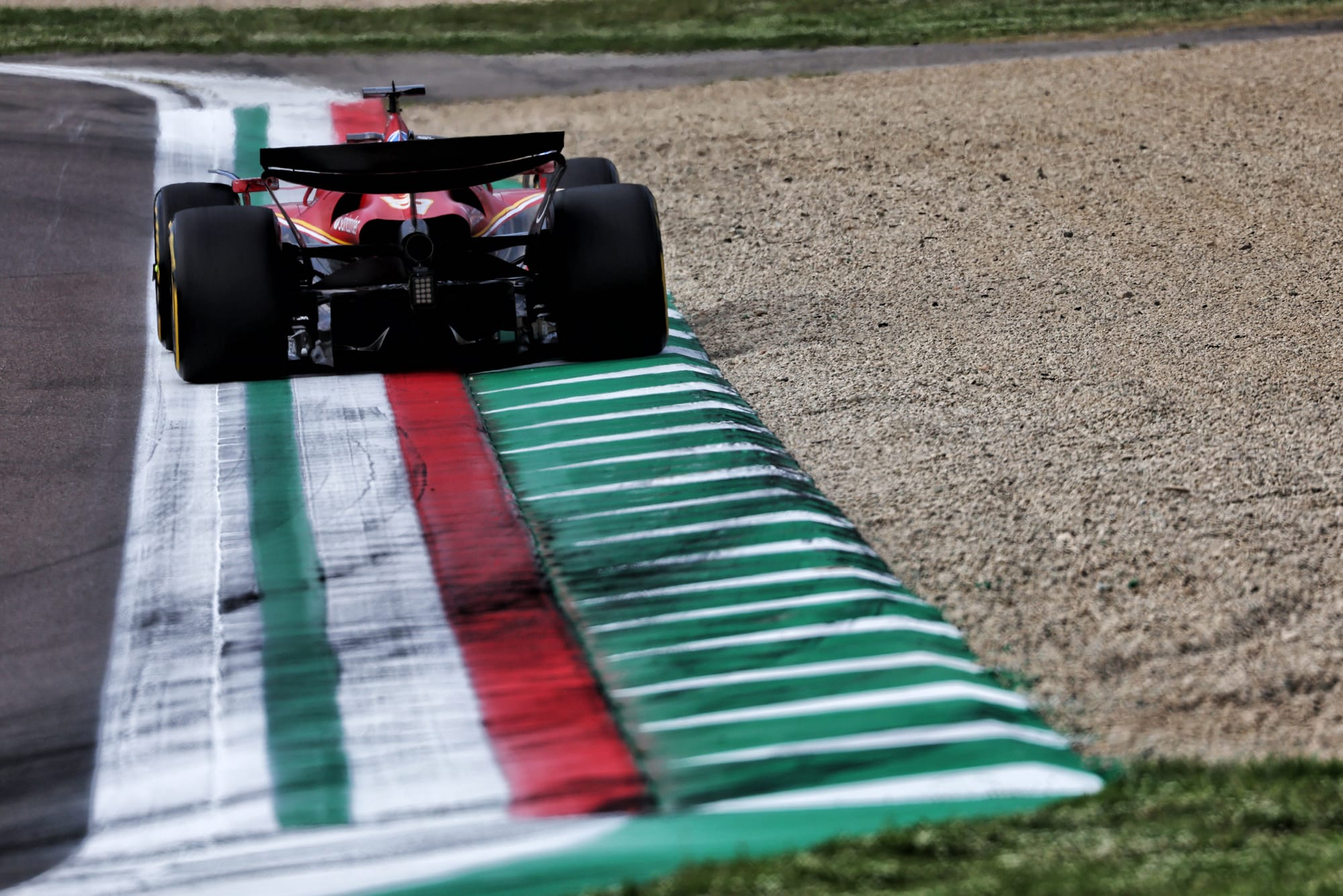
Leclerc had admitted after qualifying fourth-fastest (then inheriting third on the grid due to a penalty for McLaren’s Oscar Piastri) that the result was a little worse than expected following a bright start to the weekend.
And the fine margins between the top three teams, plus Imola being tricky to overtake on with one fairly limited DRS zone, meant that track position going into Sunday’s race would more than likely define the result.
This is not necessarily the best layout for the Ferrari engine given its turbo arrangement provides good power delivery off corners and is perhaps lacking at the very top end. But Leclerc was also adamant that Ferrari was missing something with its engine strategy at Imola compared to McLaren and Red Bull.
He felt that its battery deployment was slightly off, as he lost time on the start-finish straight beginning his qualifying laps that he could not make up. Maybe that was a hint at a need to better compensate the engine’s characteristics on a track like this.
“We basically lost everything at the launch,” he said post-race.
“For some reason, we had a slightly different power strategy compared to McLaren and Red Bull, and we lost everything on the run down to Turn 2.
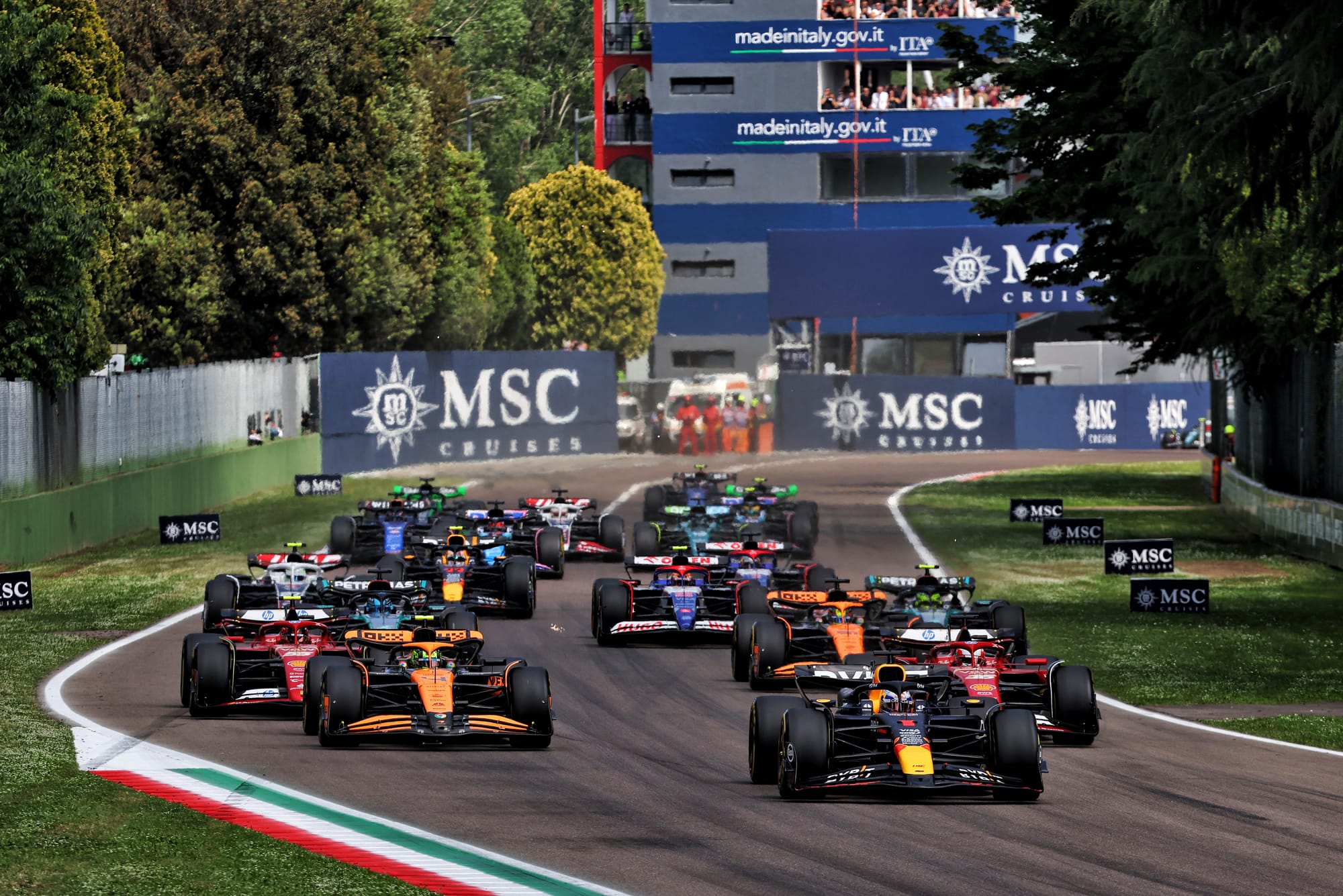
“Max, on top of that, had the slipstream.
“But this is something we'll have to look into, because especially on a track like this, track position is absolutely everything.
“And when you only have a tenth in between Red Bull, McLaren, and ourselves, we need to do everything perfect.
“The third place [on the grid] cost us maybe a better result in the race.”
Leclerc was certainly hamstrung early in his qualifying lap. He was over a quarter of a second behind Verstappen and nearly a tenth slower than Norris even by the Tamburello chicane that properly begins the lap.
But Vasseur wasn’t quite so convinced about the use of the energy recovery system being such an issue. He seemed to concede “we need to change our approach, to do [something] differently” but also said “you have to downplay this a little bit” – as he felt it was true that the run to the first chicane was crucial but that the main factor there was Verstappen’s tow from Nico Hulkenberg.
It can’t be said for sure that a better Leclerc run to Turn 1 beats Norris, let alone Verstappen, but what does seem more certain is that this was a continuation of Ferrari missing a little on Saturday and then looking stronger on Sunday. The SF-24 still looks a little less potent over one lap.
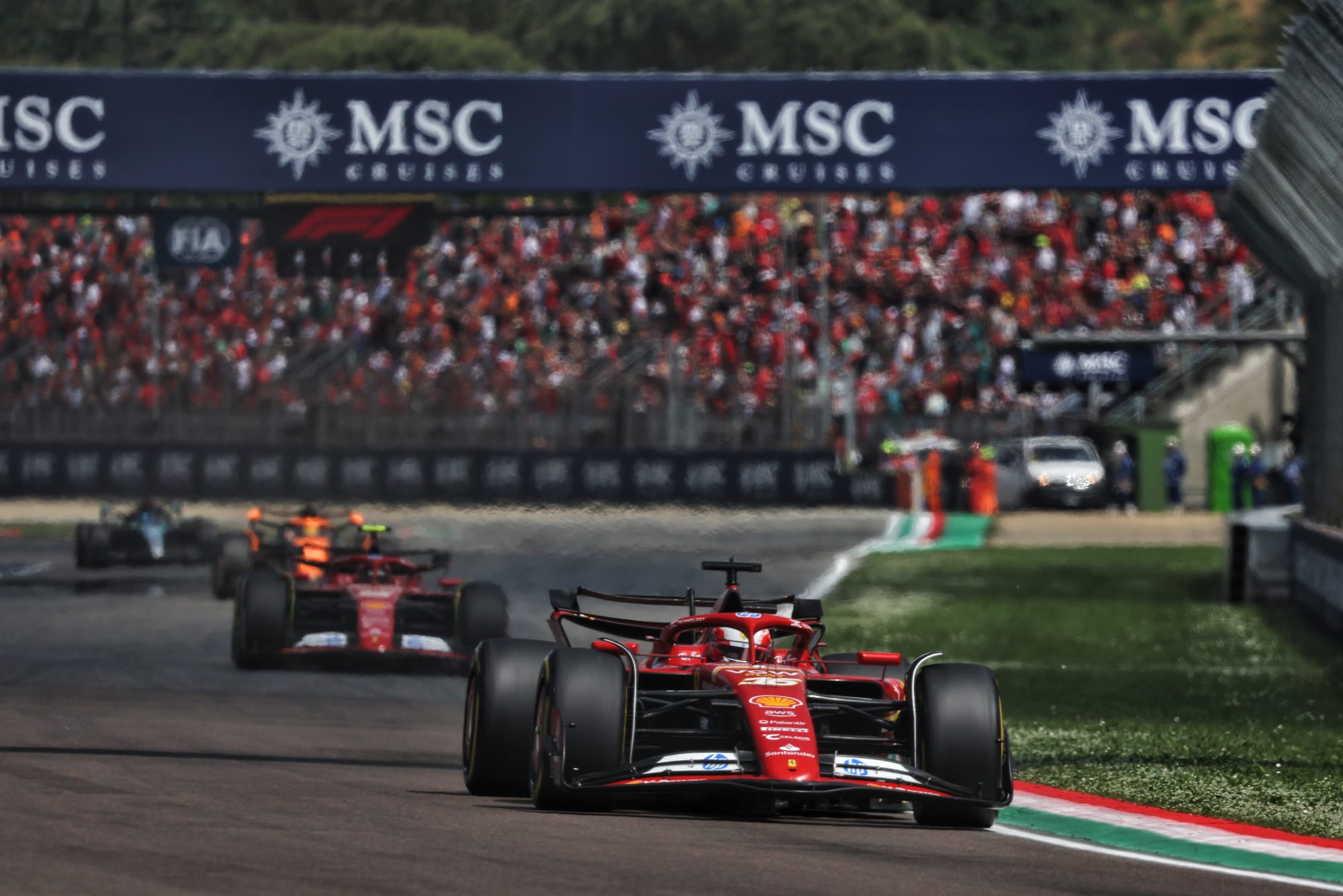
As for whether a better result would have been possible starting further ahead, it seems likely that any of the top three cars would have had a good chance of winning had they held track position.
Leclerc and Vasseur felt that his pace, which seemed to be weak compared to Norris in the final phase as the McLaren charged onto the back of Verstappen, was heavily influenced by running behind Norris for so long.
Their contention is that a smoother race in clear air, controlling the pace and the tyres, would have resulted in Leclerc running consistently at the impressive pace he showed behind Norris initially on the hards.
SO DID THE UPGRADE WORK?
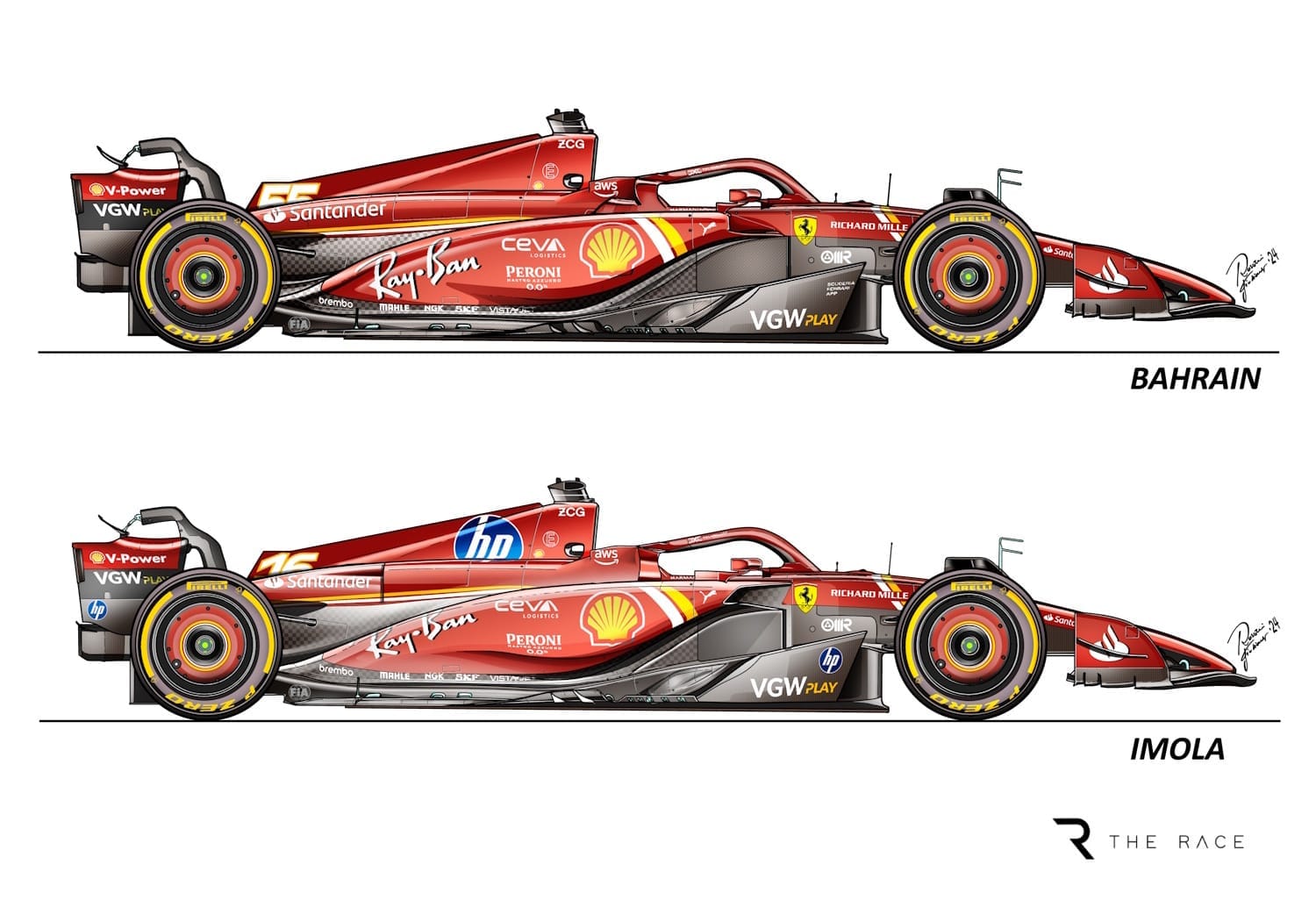
Vasseur never expected the first major Ferrari upgrade of the season to be a gamechanger, even though it impacted the whole car from front to back.
It was extensive, just not enough to beat McLaren, let alone Red Bull. Leclerc was a couple of tenths from pole with a deficit just inside its seasonal average to Red Bull, and in the race looked stronger than that.
But it sounds like Ferrari’s got some work to do to refine its car set-up to maximise its performance through the weekend. That was being talked about even before the upgrade hit the track properly, and Carlos Sainz seemed particularly stymied this weekend.
He trailed Leclerc throughout and while optimistic about what his team-mate’s performance hinted could be possible for Ferrari in the coming races, Sainz admitted to being baffled by his own issues.
“I'm pretty sure after quali yesterday we saw something in the car that might not have been working as expected, and we also had some issues with deployment, so today was a bit of a damage limitation race for me after what we saw yesterday,” Sainz said.
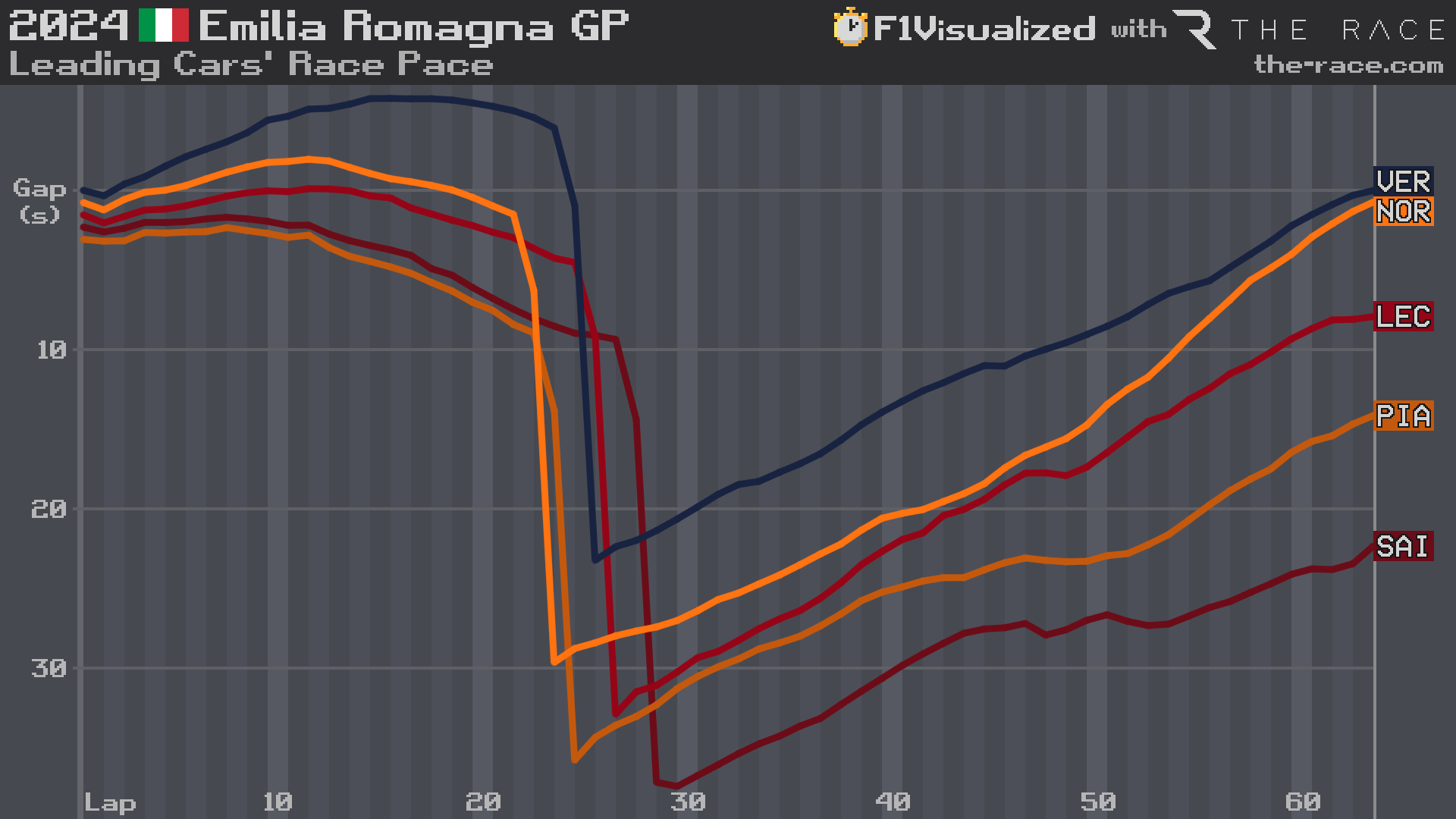
“Honestly not happy because we've been lacking a bit all weekend and a bit behind, a couple of tenths too slow, which is not ideal.
“It’s something on the aero side that we need to look into. Also with the deployment. Some issues during the whole race that were holding me back, especially in the first stint."
Leclerc also suggested Imola is a difficult track to judge because of the importance of kerb-riding – again, a set-up matter rather than a development one.
“Everything we expected from this upgrade we got,” Leclerc said. “The numbers confirmed what we were expecting.
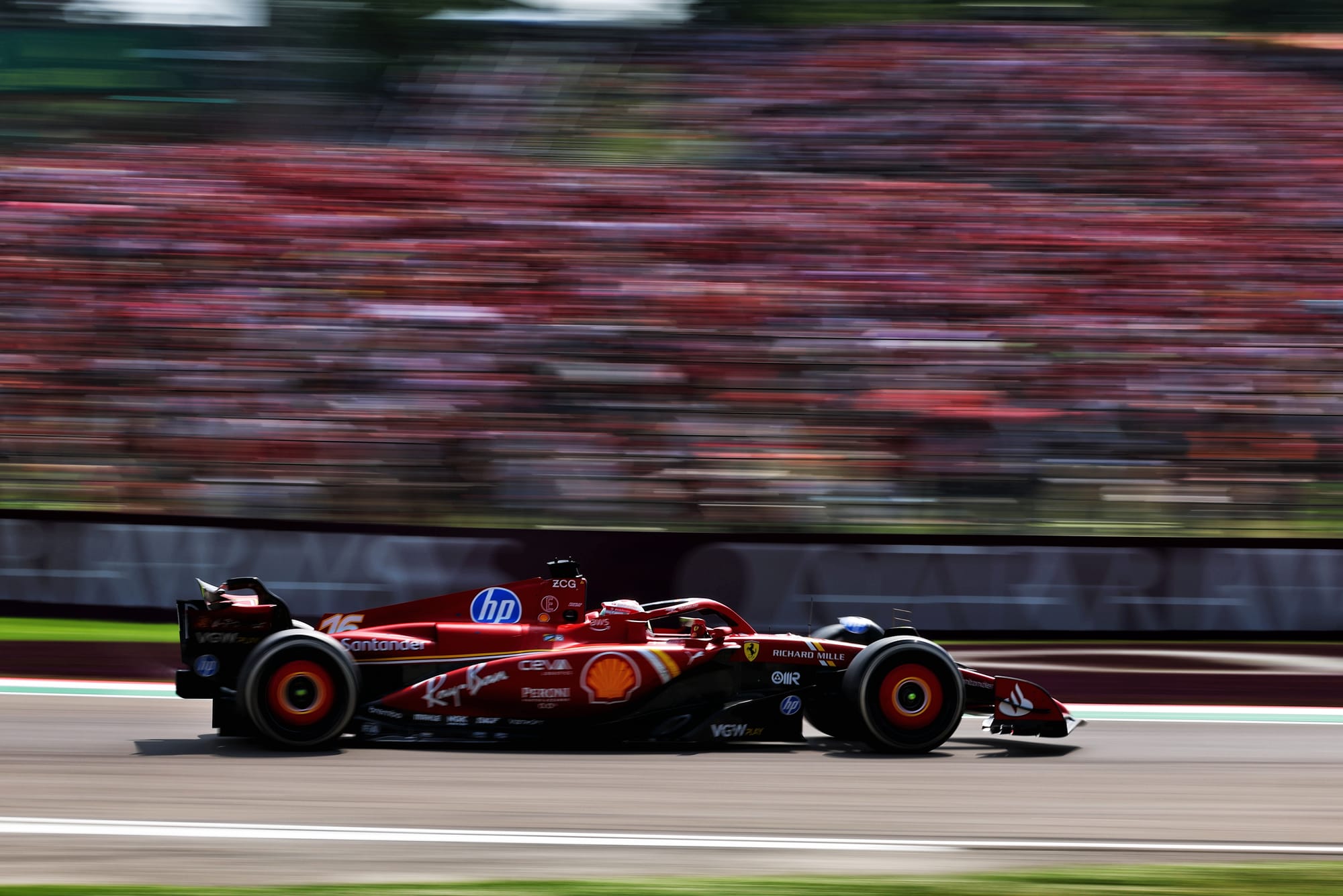
“As always, when you put a new package on the car, it always requires one or two races in order to find the optimum window of this package and set up the car in a way that it always performs at its best.
“There will be this learning that we'll take in the next few races and that should bring us towards [it being] easier to extract the maximum out of it.
“We'll work on that before next race, and hopefully it will make us go back in front of McLaren.”
SPEEDING UP DEVELOPMENT
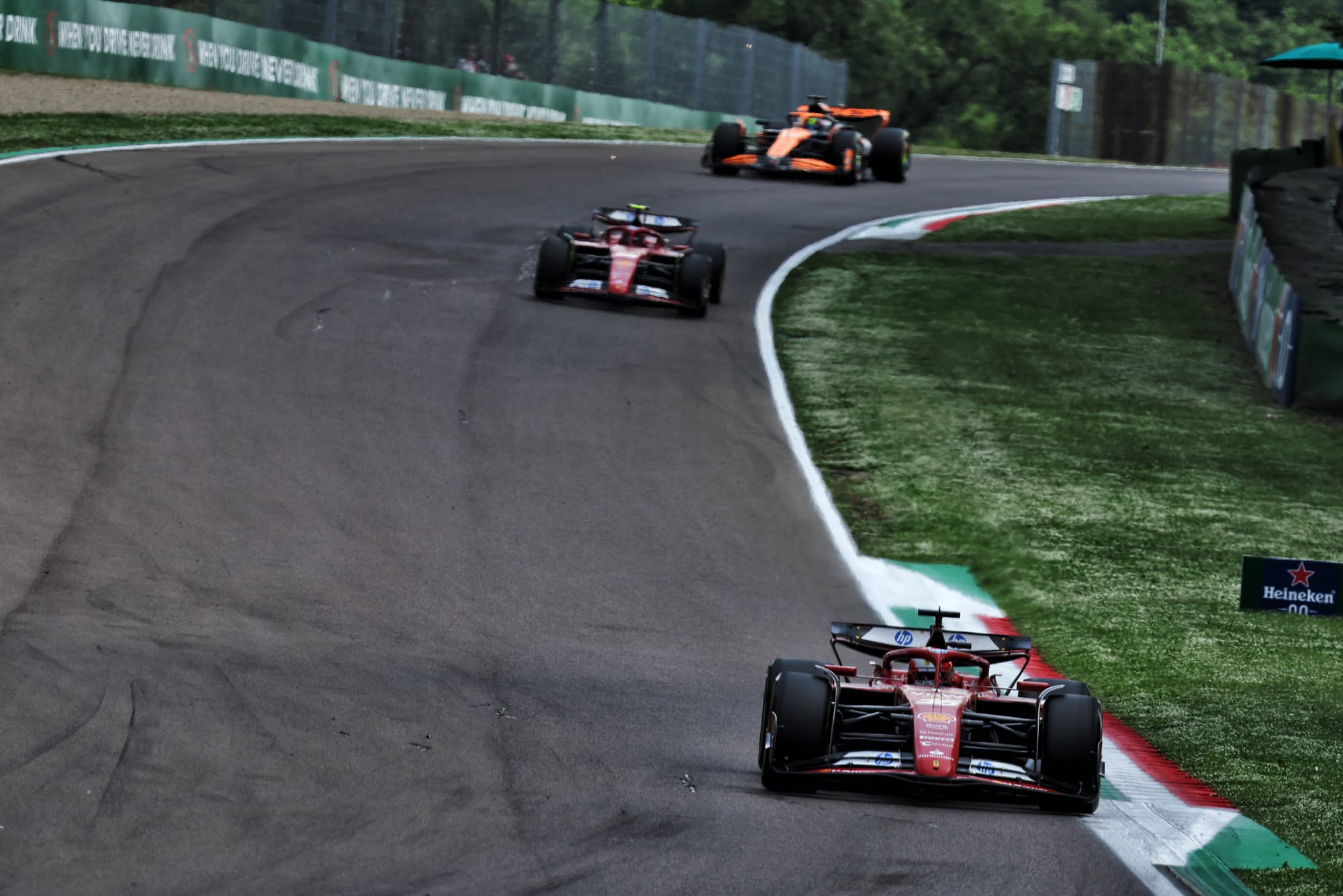
The likelihood is that, with Red Bull still improving its own car and McLaren’s massive Miami upgrade proving more valuable at Imola, a good but not seismic Ferrari gain simply means it remains in the mix.
That puts an emphasis on continued development now, with Red Bull refining its class-leading car and McLaren yet again proving prolific at adding a big chunk of performance in-season.
“We are at the point now where we will have to speed up the development,” Vasseur said.
“Imagine that someone could bring an upgrade one race before, when you have three teams in one tenth, you can jump from P5 to P1.
“You will have to speed up the time-to-market. I had a discussion after the race for this, and it will be crucial, but we also have to pay attention that we are now chasing the last hundredths.
“It's not anymore an upgrade of five tenths. It means that you also have to be sure that what you are bringing is working.”
Vasseur indicated it’ll be two or three races before another upgrade arrives, suggesting that Ferrari’s chances in Monaco and Canada will come down to getting the set-up right and exploiting the maximum from its upgraded car.
There is a feeling that Red Bull will still have easier, more commanding weekends on tracks that do not play to its car’s weaknesses like Imola – but Ferrari’s and McLaren’s respective developments have at least made the lead fight close enough that it can be influenced by team execution, weekend circumstances and track characteristics, as well as the different strengths and weaknesses of each package.


